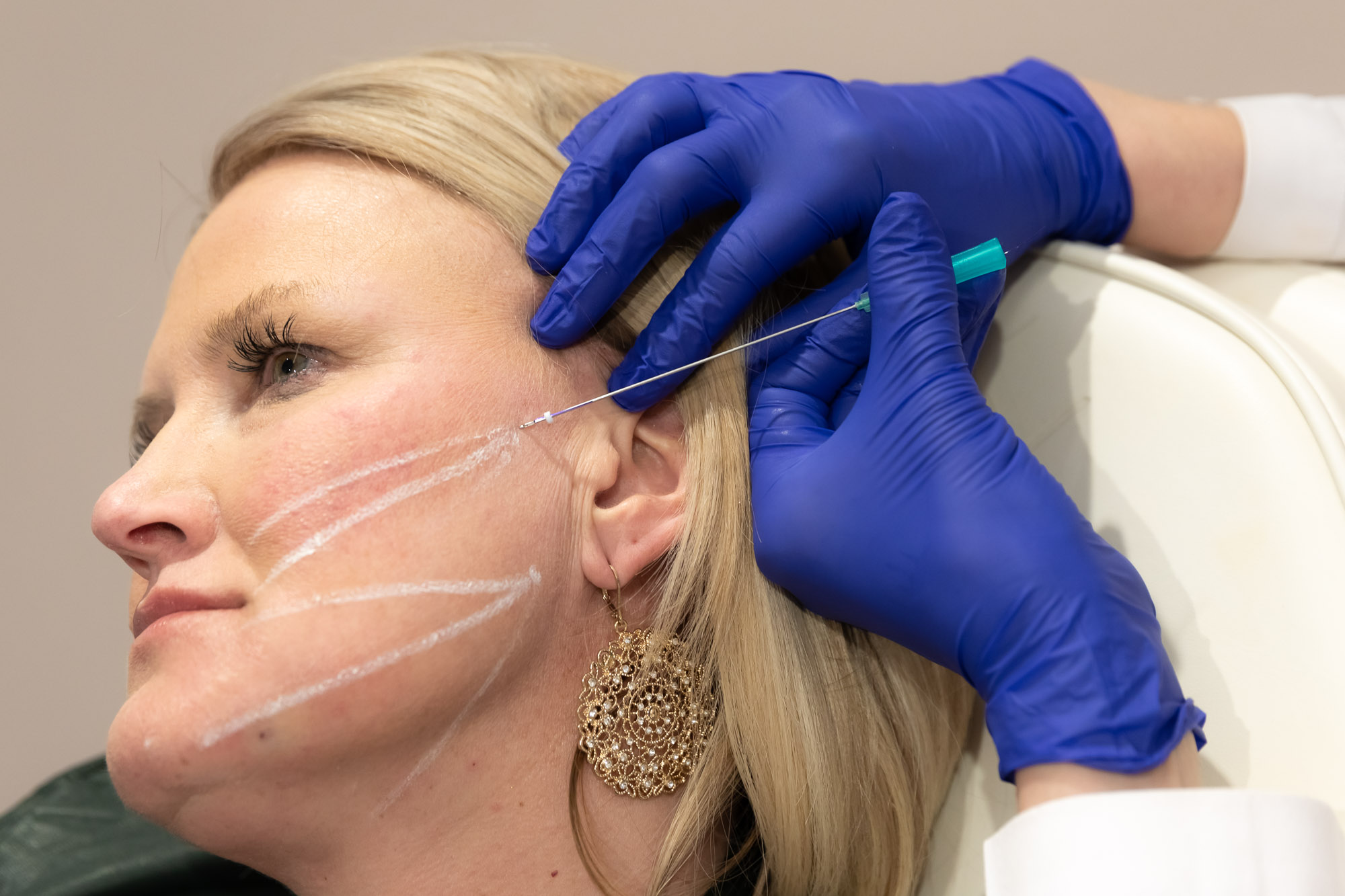In the quest for eternal youth and beauty, the world of cosmetic enhancements continually evolves. From invasive surgeries to non-surgical procedures, advancements in medical aesthetics offer a plethora of options for those seeking to rejuvenate their appearance. One such innovation gaining popularity is the thread facelift, a minimally invasive technique promising remarkable results without the downtime associated with traditional facelift surgeries. In this comprehensive guide, we delve into the intricacies of thread facelifts, exploring their procedure, benefits, drawbacks, and considerations.
Understanding Thread Facelift
A thread facelift, also known as a thread lift or a feather lift, is a cosmetic procedure designed to lift and tighten sagging facial tissues using dissolvable surgical sutures, or threads. Unlike conventional facelift surgeries that involve extensive incisions and removal of excess skin, a thread facelift is minimally invasive and relies on strategically placed threads to lift and reposition facial tissues.
The procedure typically begins with the administration of local anesthesia to numb the treatment area, ensuring patient comfort throughout the process. Next, the cosmetic surgeon or dermatologist inserts thin, biocompatible threads beneath the skin through small incisions made in strategic locations. These threads, often made of materials like polydioxanone (PDO) or poly-L-lactic acid (PLLA), feature tiny barbs or cones along their length, which anchor them to the underlying tissues upon insertion.
Once inserted, the threads act as scaffolding, lifting and supporting the facial tissues to restore a more youthful contour. The surgeon then gently adjusts the threads to achieve the desired lift before trimming any excess threads. The entire procedure typically takes around 30 to 60 minutes, making it a convenient option for those with busy lifestyles.
Pros of Thread Facelift
1. Minimally Invasive: One of the most significant advantages of a thread facelift is its minimally invasive nature. Unlike traditional facelift surgeries that involve extensive incisions and prolonged recovery times, thread lifts require only small incisions and entail minimal downtime. This makes them an attractive option for individuals seeking noticeable results without the risks and recovery associated with invasive procedures.
2. Quick Procedure: Thread facelifts are relatively quick procedures, often completed in under an hour. This makes them suitable for individuals with busy schedules who cannot afford extended downtime. Patients can typically resume their daily activities shortly after the procedure, making it a convenient option for those with demanding lifestyles.
3. Natural Results: Thread facelifts aim to deliver subtle yet noticeable results, enhancing the natural contours of the face without the “pulled” or overly tight appearance sometimes associated with traditional facelift surgeries. By strategically lifting and supporting sagging tissues, thread lifts can restore a more youthful appearance while maintaining the patient’s natural facial expressions.
4. Stimulates Collagen Production: The threads used in a thread facelift are designed to stimulate the body’s natural collagen production. Collagen is a protein that provides structural support to the skin, helping to improve its elasticity and firmness. As the threads gradually dissolve over time, the newly formed collagen continues to enhance the skin’s texture and tone, prolonging the results of the procedure.
5. Customizable: Thread facelifts offer a high degree of customization, allowing surgeons to tailor the treatment to each patient’s unique needs and desired outcomes. Whether targeting specific areas of the face or addressing overall sagging, the procedure can be adjusted to achieve optimal results for individual patients.
Cons of Thread Facelift
1. Temporary Results: While thread facelifts provide immediate improvement in facial contours, the results are not permanent. The threads used in the procedure gradually dissolve over time, typically within 12 to 18 months, after which the lifting effect diminishes. To maintain the results, patients may require additional treatments at regular intervals, adding to the overall cost of the procedure.
2. Potential for Complications: Although thread facelifts are considered safe when performed by experienced practitioners, like any cosmetic procedure, they carry a risk of complications. These can include infection, bruising, swelling, asymmetry, and thread migration (movement of the threads from their original placement). While rare, these complications underscore the importance of choosing a qualified and skilled provider to perform the procedure.
3. Limited Lifting Capability: While thread facelifts can produce noticeable improvement in mild to moderate facial sagging, they may not be as effective for individuals with significant laxity or excess skin. In such cases, traditional facelift surgeries may be more appropriate to achieve the desired results. It’s essential for patients to have realistic expectations about the extent of improvement achievable with a thread lift.
4. Discomfort and Bruising: While thread facelifts are minimally invasive, some patients may experience discomfort, bruising, or swelling in the treated area following the procedure. These side effects are typically mild and subside within a few days to a week. However, individuals with a low tolerance for discomfort may find the recovery process challenging.
5. Cost Considerations: While thread facelifts are generally less expensive than traditional facelift surgeries, they still entail costs that can add up over time, especially considering the need for repeat treatments to maintain the results. Patients should factor in the long-term costs of the procedure when considering it as an option for facial rejuvenation.
Conclusion
Thread facelifts offer a minimally invasive alternative to traditional facelift surgeries, providing noticeable improvement in facial contours with minimal downtime. While they offer several benefits, including natural-looking results, quick recovery, and collagen stimulation, it’s essential for patients to weigh these advantages against the potential drawbacks, such as temporary results, risk of complications, and limited lifting capability. Ultimately, consulting with a qualified cosmetic surgeon or dermatologist is crucial to determine whether a thread facelift is the right option to achieve the desired aesthetic goals. By understanding the procedure’s pros and cons, individuals can make informed decisions about their facial rejuvenation journey.

